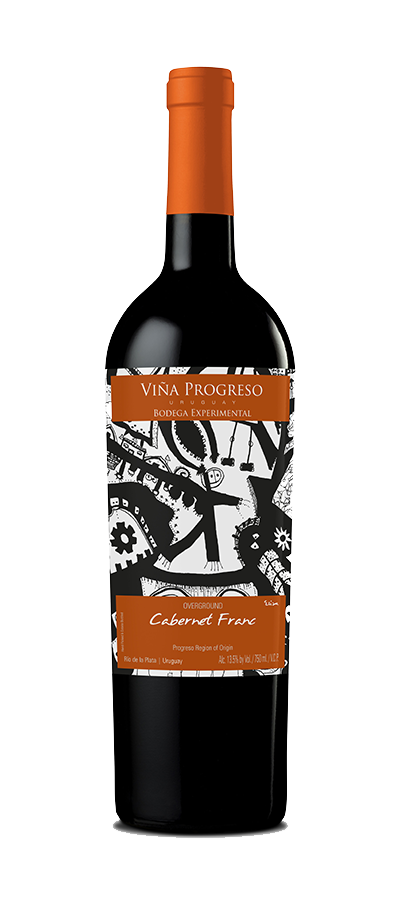

Viña Progreso Overground Cabernet Franc

| Bodega | Viña Progreso |
| Denominación | Progreso |
| Estilo de vino | Vino Tinto Fino Elegante |
| Cosecha | 2021 |
| Cierre de botella | Corcho |
| Viticultura | Orgánico |
| Alcohol por volumen | 14% |
| Volumen | 750ml |
| Potencial de envejecimiento desde cosecha | < 5 Años |
| Envejecimiento | Barril de acero inoxidable |
Notas de degustación
Vino tinto afrutado muy agradable. Color peonía intenso, intenso y vibrante con lágrimas brillantes. Aroma chispeante de fruta roja madura con matices vegetales de ramitas frescas y pimiento verde. Mucha expresión y retrogusto jugoso. Una deliciosa copa de vino con platos grasos como un lechón al asador o panceta de cerdo a la plancha. Perfecto vino de barbacoa, también con platos indios picantes y con quesos frescos de moho blanco. Temperatura de servicio: 15 ° C.
Wine Story
The village of Progreso, 25 km. north of the sea, is in the centre of what is probably the best grape growing area of Uruguay. Old traditions of European heritage meet the powerful Uruguayan personality and exotic New World grapes to produce wines of outstanding quality.
VIÑA PROGRESO is Gabriel Pisano’s “Experimental Winery” as he likes to call it. Here he makes his own personal wines in a modern, fruity and young style, reflecting his conception of new generation wines from Uruguay and specifically from Progreso Region
Before returning home as the prodigal son, Gabriel made vintages with world famous winemakers.
Worked in Clos Apalta (Apalta Valley, Colchagua) in Chile under Michel Rolland.
Made wine at David Ramey Wine Cellars (Sonoma), widely acknowledged to be among the wine pioneers who brought California to the forefront of the international wine world.
Beyers Truter, of Beyerskloof (Stellenbosch), probably the most famous winemaker from South Africa, would not let Gabriel go back home after a vintage with him.
Worked with Dany De Wet from De Wetshof Estate (Robertson Valley), one of South Africa’s premier Chardonnay houses.
At Mas Doix, one of the smallest but most prized cult wines from the Priorat (Catalonia), Gabriel mastered the Integral Winemaking in open barrels, which he is using for his “UNDERGROUND” Collection of very rare wines.
His “OVERGROUND” Collection consists of not so frequent varieties in the country as Sangiovese, Viognier, Cabernet Franc and Pinot Noir among others, besides Tannat, the insignia variety of Uruguay.
